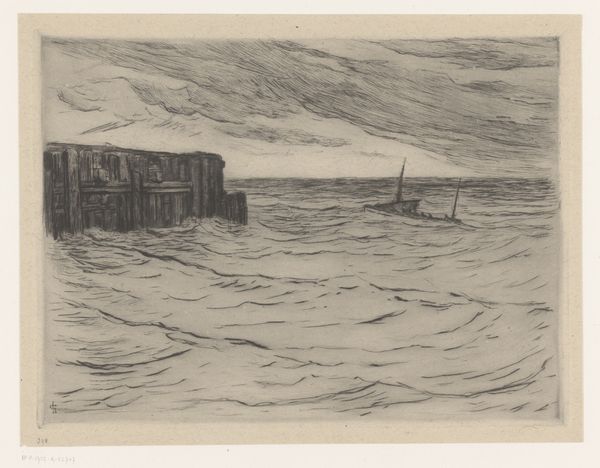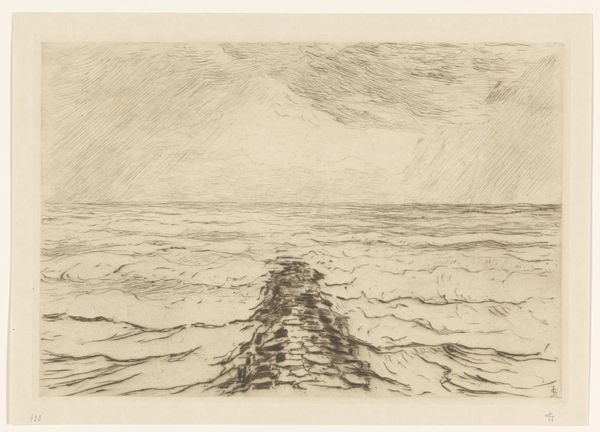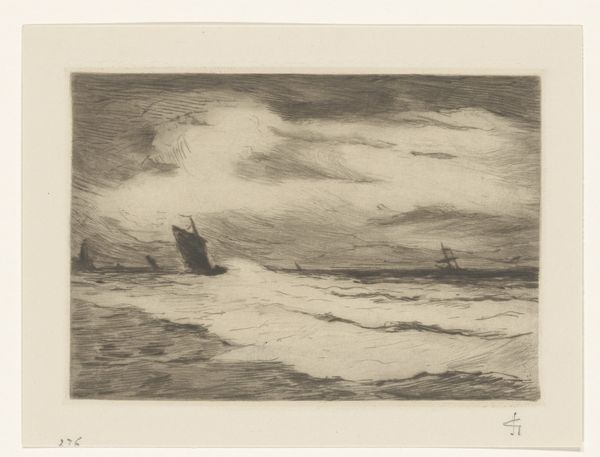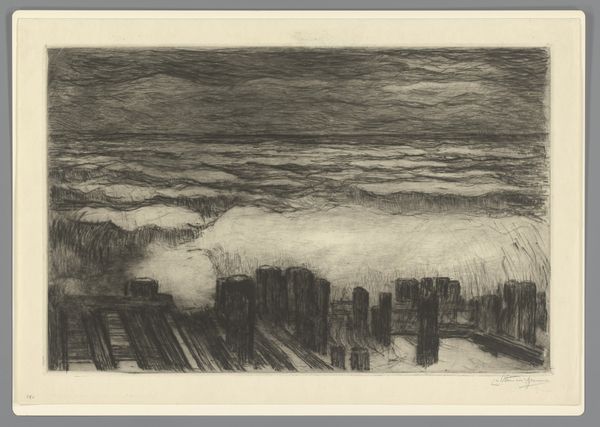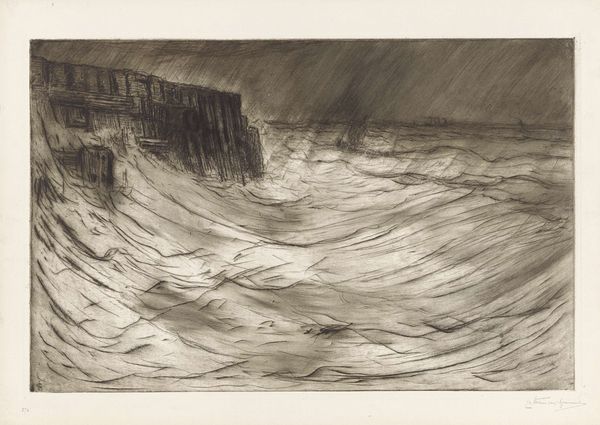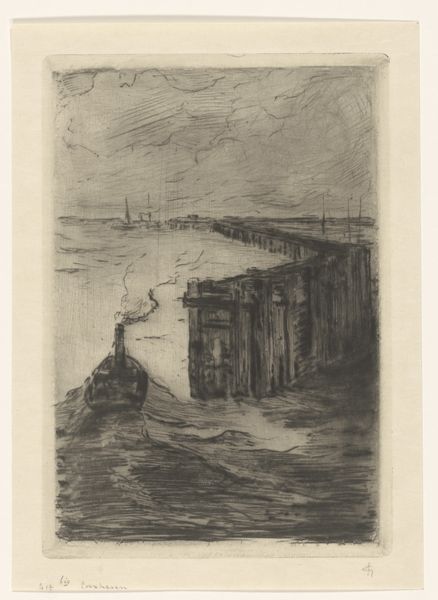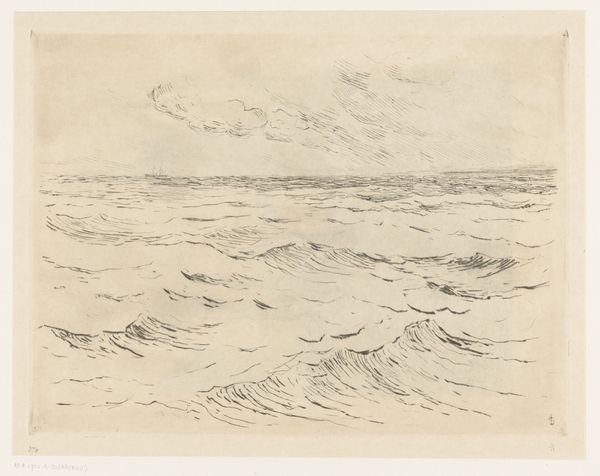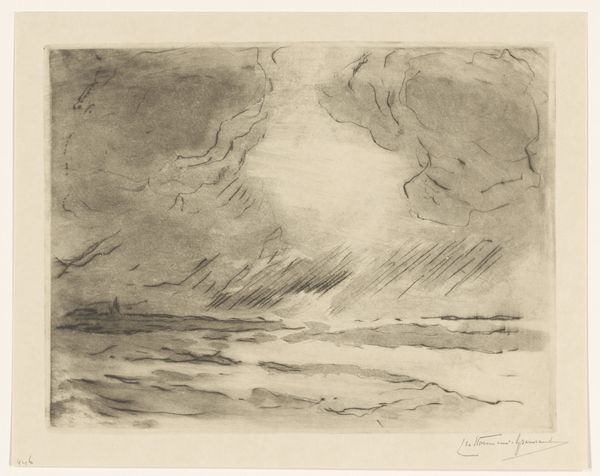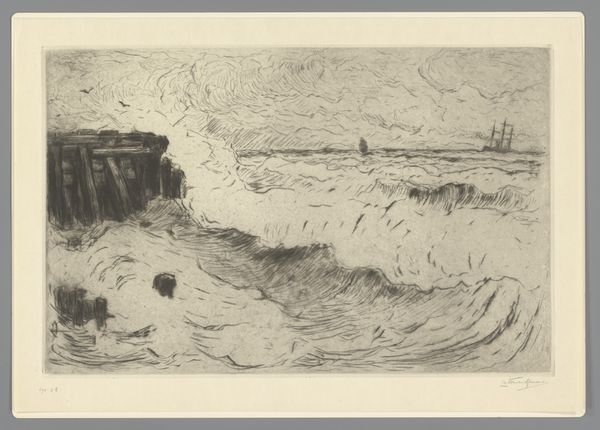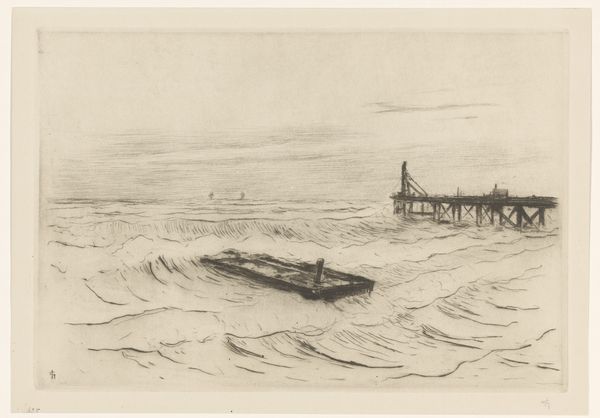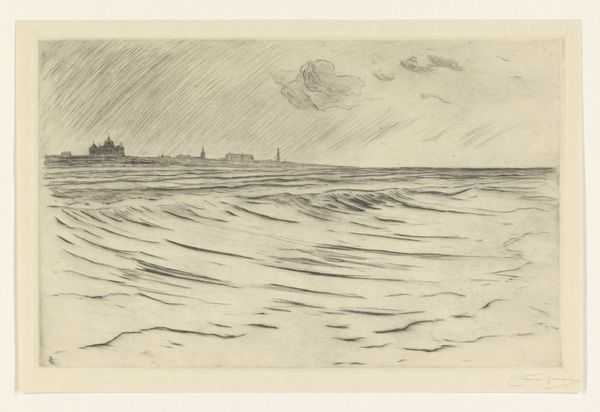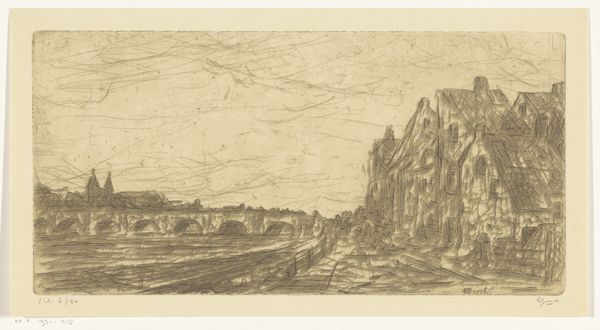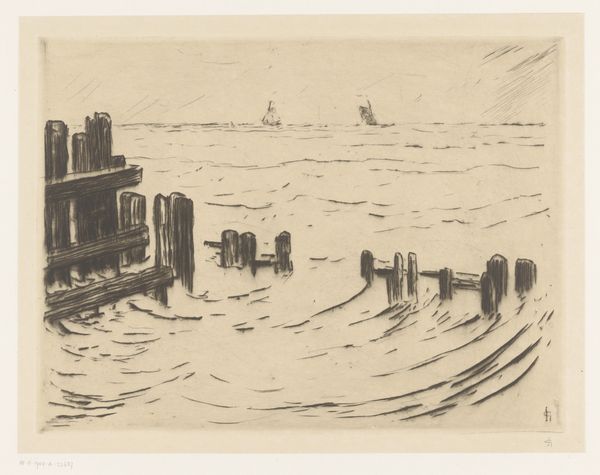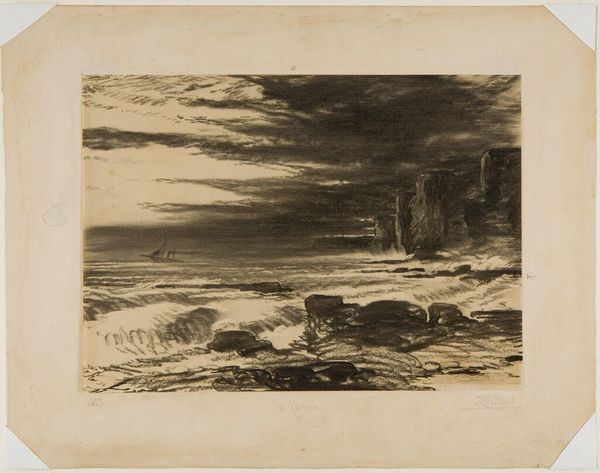
drawing, etching, pencil
#
drawing
#
impressionism
#
etching
#
landscape
#
etching
#
personal sketchbook
#
pencil
#
sea
Dimensions: height 478 mm, width 640 mm
Copyright: Rijks Museum: Open Domain
Curator: Welcome. We’re standing before Carel Nicolaas Storm van ‘s-Gravesande's "Woeste zee te Vlissingen," or "Wild Sea at Vlissingen." This work, dating roughly between 1851 and 1924, employs etching and pencil, offering us a glimpse into the artist's exploration of coastal landscapes. It is currently held in the Rijksmuseum collection. Editor: Immediately, the wildness leaps out. The waves feel alive, almost angry. The limited tonal range evokes a sense of foreboding; a kind of Romantic sublime meets moody Impressionism. It feels raw, urgent—like a fleeting observation captured with frantic energy. Curator: The artist, aligned with the Hague School and later embracing impressionistic ideals, captured the atmospheric conditions of the Dutch coastline. You can see in his use of etching—this reproduction, or multiplication, of scenes and places made it widely available, and speaks to its broader context, contributing to ideas about landscape, and national identity in art. Editor: Yes! There's a kind of controlled chaos. Those powerful horizontals of the pier versus the wild diagonals of the crashing water. The way the horizon almost disappears... like a painting, actually, rather than a calculated print. A very moving and dynamic image, though I'm a little surprised at the use of etching in this case, as I imagine Storm van ‘s-Gravesande walking on the sea docks drawing. I suppose you have to take advantage of weather while on the water! Curator: Interestingly, Storm van ‘s-Gravesande explored photography alongside printmaking. These experiments together likely shaped his methods and choices when etching or drawing "en plein air" like the French impressionist painters. These media influenced his treatment of light, shadow, and atmospheric perspective here in "Woeste zee te Vlissingen," giving an emotional and spatial depth beyond typical marine renderings. Editor: It's fascinating to see how these "traditional" mediums of drawing and printmaking were shifting towards the impressionistic sensibilities because there is definitely a feeling that you can just go down to Vlissingen today and you can get to something like that still! It transcends mere documentation, that is for sure, but this image feels both of a time, and timeless. Curator: Indeed. This work is less about a literal representation and more about capturing the experience and the emotional impact of that landscape and place at Vlissingen, while simultaneously expanding both genre painting and printmaking to something very new for the period. Editor: Well, it certainly makes you feel small, staring into the face of that turbulent sea, captured by hand. And somehow it is quite exhilarating! Curator: It speaks to how artists were using and shaping print media. I think this speaks powerfully to his context in the history of the sea at Vlissingen and Dutch painting at large!
Comments
No comments
Be the first to comment and join the conversation on the ultimate creative platform.
